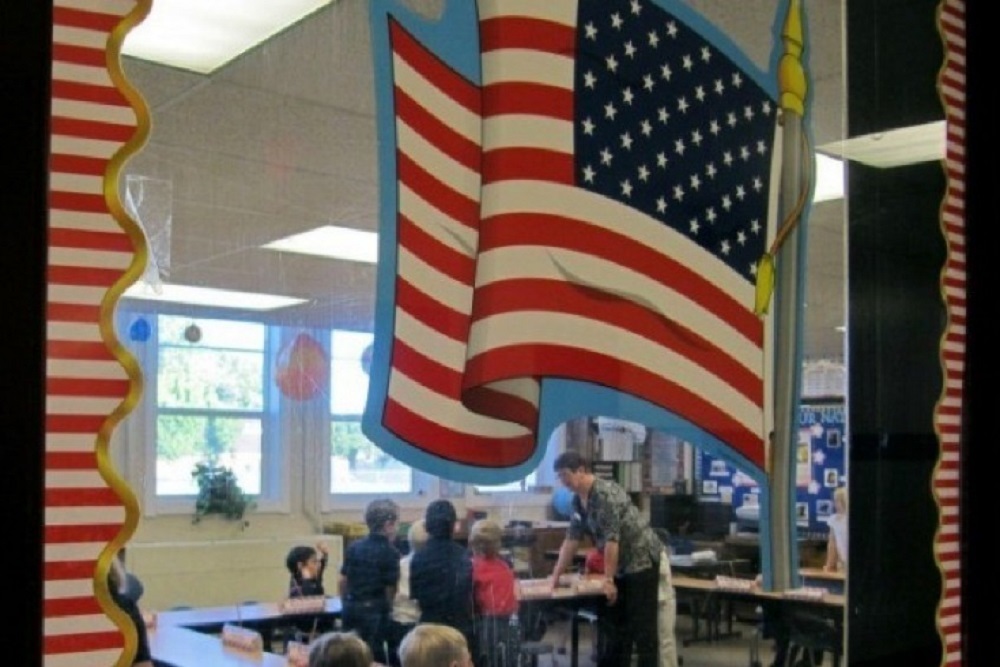American Legislative Exchange Council issued the following announcement on April 11.
After every school shooting tragedy, the same gun debates rage in America, pitting gun control advocates against Second Amendment supporters. But this frequently-heated debate unfortunately overshadows solutions that might bring Americans together; common sense measures to makes schools safer that get obscured by the shouting match over gun ownership.
Instead, ALEC is considering two non-firearm related solutions we hope will gain the backing of people across the political spectrum, regardless of where they fall in the national gun debate: securing physical school infrastructure, and improving district disciplinary systems, both of which have the potential to stop tragedies like the Parkland shooting from happening again.
Most schools in the United States are considered “soft targets,” defined as “a person or thing that is relatively unprotected and vulnerable.” Millions of children gather in schools every day, yet the school structures themselves remain mostly unprotected.
If you’ve ever visited your state capitol or the office of your Congressman in Washington, D.C., you know that most government structures have controlled access, security personnel, and even require people to walk through metal detectors. Many government facilities also require visitors to check in with a central security officer. While some schools may have such measures in place, these schools are the exception, not the norm. Sadly, a large number of schools do not have classroom doors that can lock from the inside.
Making schools more secure is a process, the first step of which should be to conduct a security assessment and develop a security plan. According to the Secure Schools Alliance and the Partner Alliance for Safer Schools, both the assessment and security plan should be developed “by experts in critical infrastructure protection in consultation with local law enforcement and local school leaders.”
Some states have been showing the way forward with their own initiatives. In 2016, Indiana passed legislation mandating that all public schools develop, maintain, and annually update a “school emergency operations plan.” Schools work with local first responders to develop the plans and make sure that all stakeholders have a copy.
Once the assessment and plans are drafted, school districts can identify the most effective means to harden their facilities.
These are just general guidelines; making schools safer will be a district-by-district, state-by-state affair, and the circumstances on the ground will be different for each school.
Similarly, schools must protect students inside their walls as well. Discipline ought to be reliant on individual information, and the judgment of teachers and administrators who actually know the student and the circumstances of his or her infraction. Unfortunately, under President Obama and continuing under the current administration, the federal government is foisting a one-size-fits-all discipline policy on districts around the country.
In 2014, the Department of Education issued federal guidance putting districts across the country “on notice” – and warned to expect federal investigations or lawsuits – for any racial disparities in their discipline rates, even if their discipline policies were facially neutral and administered in an evenhanded manner. But Broward County, the county in which the Parkland shooting took place, was one of the first in the country to implement these laxer discipline policies the federal government is still nudging schools across the country to accept.
The Parkland shooter was involved in an endless string of discipline and law enforcement-worthy incidents starting in middle school. Several of these incidents – issuing threats, initiating physical fights, and bringing bullets to school – would have been serious enough to refer him to the police but for Broward’s discipline policy. Without that policy, he might have had the arrest record that would have prevented him from buying the gun with which he killed 17 students and wounded 14 others.
“The explicit aim of Broward’s new approach to school safety was to keep students like Cruz off the police’s radar,” wrote Max Eden of the Manhattan Institute, who has been studying the effects of the federal guidance letter.
Not everyone will agree on the right way to discipline students in schools or on how to deal with potentially dangerous students, and districts and school boards should use this incident as a catalyst to discuss the issue. But a blanket directive from the federal government to implement the discipline policies that failed so badly in Parkland is not the way to go.
These are just two of the potential policy changes that might make our schools safer. The gun debate will continue to grab headlines, but Americans who want to get something practical and useful done should look for common sense solutions to protect our children.
Original source can be found here.


 Alerts Sign-up
Alerts Sign-up